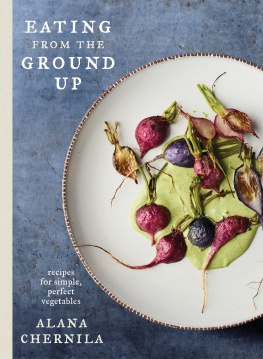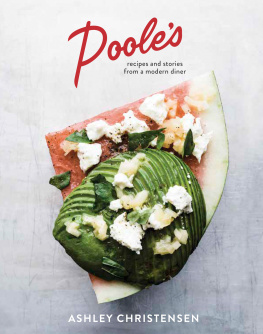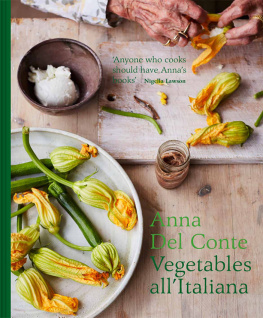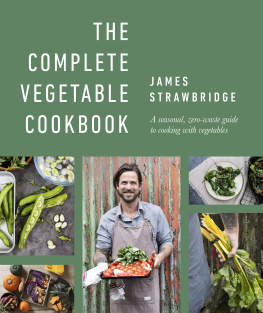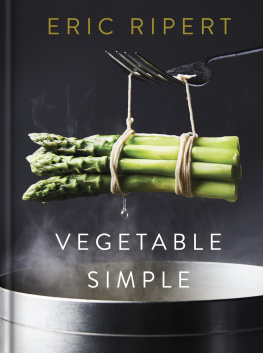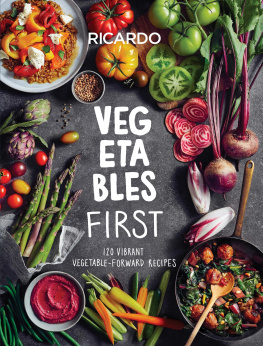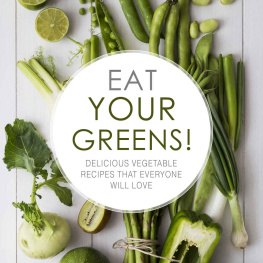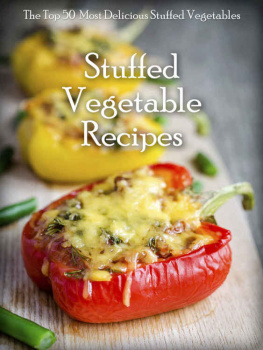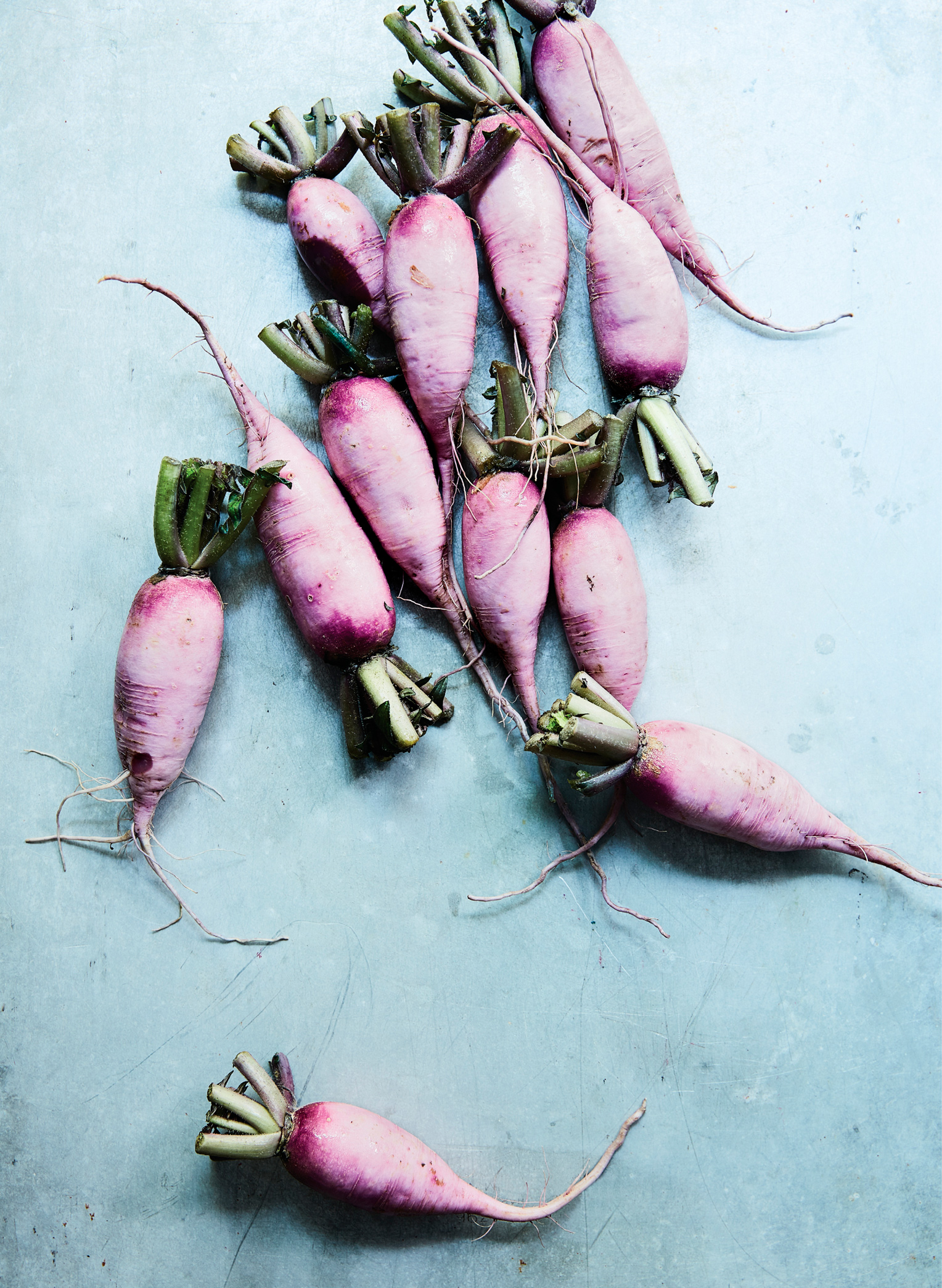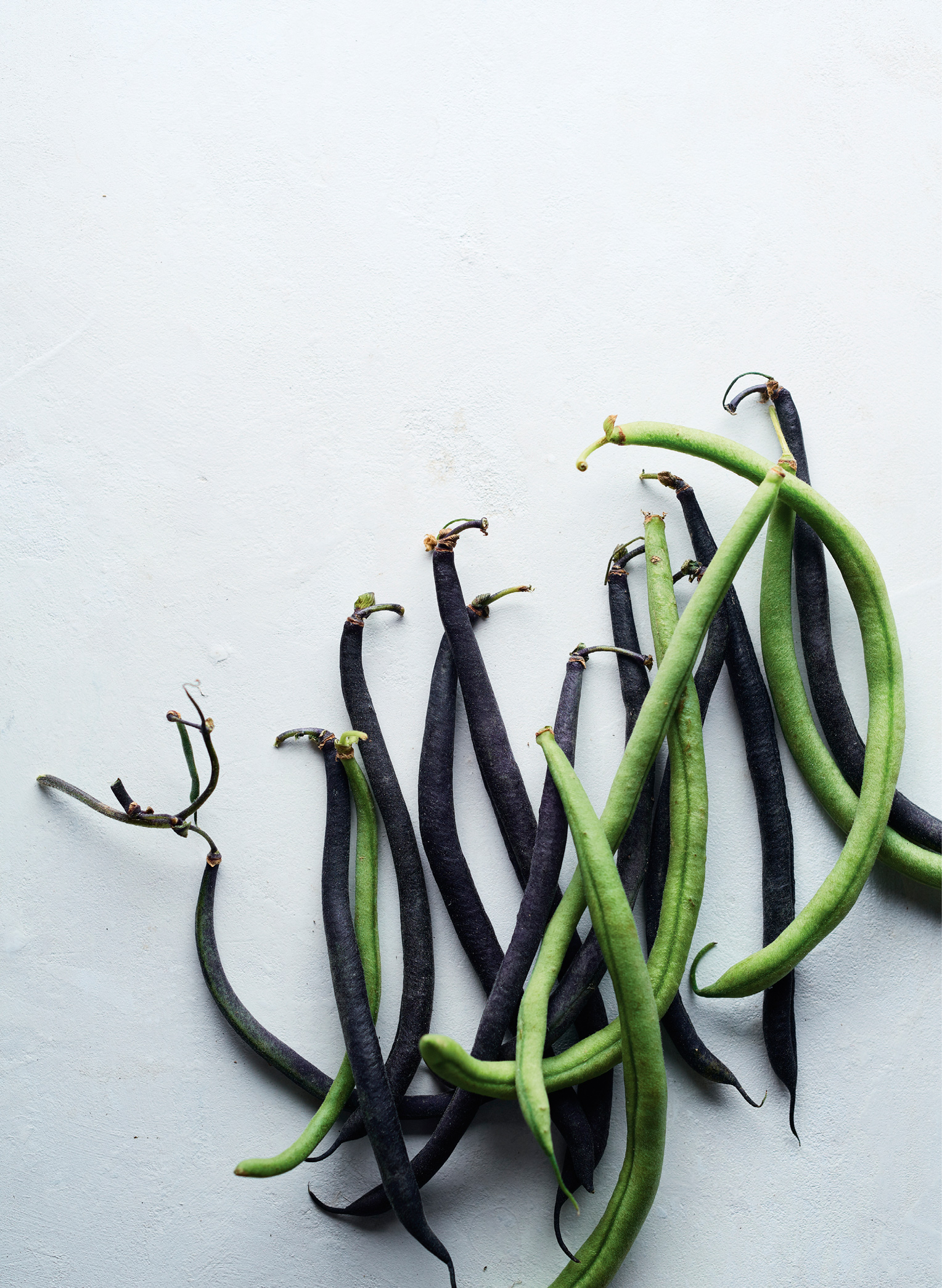SUGGESTED RECIPES BY VEGETABLE
ARUGULA (ALSO KNOWN AS ROCKET)
ASPARAGUS
AVOCADO
BEETS AND BEET GREENS
BOK CHOY
BROCCOLI
BROCCOLI RAAB (RAPINI)
BRUSSELS SPROUTS
CABBAGE
CARROTS
CAULIFLOWER
CELERIAC (ALSO KNOWN AS CELERY ROOT)
CELERY
COLLARDS
CORN
CUCUMBERS
EGGPLANT
ENDIVE (ALSO KNOWN AS BELGIAN ENDIVE)
ESCAROLE (ALSO KNOWN AS BROAD-LEAVED ENDIVE)
FENNEL
FRISE (ALSO KNOWN AS CURLY ENDIVE)
GREEN BEANS
GREEN CHILE
KALE
KOHLRABI
LEEKS
MUSHROOMS
ONIONS
PEAS
PEPPERS
POTATOES
RADICCHIO
RADISHES
RUTABAGA
SCALLIONS
SHALLOTS
SPINACH
SUMMER SQUASH AND ZUCCHINI
SWEET POTATOES
SWISS CHARD
TOMATILLOS
TOMATOES
TURNIPS AND TURNIP GREENS
WATERCRESS
WINTER SQUASH
ACKNOWLEDGMENTS
THANK YOU.
To Rob Weisbach, always.
To everyone at Clarkson Potter: my editors Jennifer Sit, Rica Allannic, Ashley Meyer, Angelin Borsics, and Doris Cooper. To Stephanie Huntwork, who has saved the day (and the page) more times than I can even count. To Aaron Wehner, Ada Yonenaka, Kim Tyner, Kathy Brock, Regina Castillo, Meghan Wilson, and Thrse Shere.
To the amazing team behind the photographs in this book: to Johnny Autry, for always catching the light, Charlotte Autry, for making the food look so good, and to Wyatt Autry, for patiently lending out his parents. To Kali Clark for her skills, to Evan Chender for saving the day with his turnips, and to Susan Hutson for finding gas during the shortage so I could get home from North Carolina. To Paul Fekete for the use of his house, to Curtis at Harris Teeter for his green chiles, and to Herb and Katie Yancey for their tomatoes and their table.
To Max, Maria, and Jess at MX Morningstar Farm for loading up my car with their most beautiful carrots.
To my interns: Soraya Weill for her tasting skills, and to Emma PassyI cant wait to see what you write.
To the friends who contributed recipes and inspiration to this book: Carla Blades, Mary Natalizia, Jane Kasten, Hedley Stone, Marisa McClellan, Jen Salinetti, Michaele Simmering and Johannes Pauwen, Flavio Lichtenthal, Franck Tessier, Heather Braaten, Molly de St. Andr, Jean-Franois Bizalion, and Chase and Alejandro de Onis.
To the friends who offered support through the making of this book: Courtney Maum, Lisa Landry, Alice Goldfarb, Aime Wimbush Bourque, Tara Austen Weaver, Bridgette Stone, Lizzie Whitman and Alexander Davis, Dawn Masiero, Casey Scieszka, Margaret Roach, Kate Burke, John McCarthy and Juan Manzo, Emily Kasten and Ben Corbett, and the whole Great Barrington Farmers Market family.
To Elizabeth Keen, for growing turnips so beautiful that I had to become a food writer to talk about them. To Naomi Blumenthal, for making me write the first word. And to the readers of Eatingfromthegroundup.com, for always asking the best questions.
For recipe inspiration and instruction: Kristin Miglore, Julia Moskin, Alice Waters, Heidi Swanson, Mollie Katzen, Deborah Madison, Nigel Slater, and Suzanne Goin.
I had the great fortune of working with an amazing group of volunteer testers throughout the course of this book. They each contributed so much, and I am grateful for their time, trust, and honesty. Thank you to Anna Hewitt, Natasha Perlis, Mikaela Oldenkamp, Cindy Grob, Christina Auer Shaw, Lisa Cohen, Liz Kellermeyer, Jenn Platzer, Dr. Miranda Haley, Jora Stixrud LaFontaine, Hannah Heller, Jesamine Gilmour, Tori Buerschaper, Beck Drew, Cindy Rosenbaum, Sadie Payne, Marguerite Stoede, Kelly Bancroft, Diana Winarski, Chelsea Marshall, Adrianne Shelton, Amita Baman Tracy, Kendra Vendetti, Holland Gidney, Lana and Michal Osusky, Michelle Boehm, Sarah Rose Moroney, Peggy Greubel, Christina Biedermann, Anastasia MacDonald, Nada Milutinovic, Lucinda Caruso, Kelly Coughlan Gearity, Rachel Oberg, Genevieve Boehme, Marisa McKee, and Mechele Small Haggard.
To my parents, Jamie and Chris Vlcek, for their patience and love.
Over the years, I have gone from being an only child to having many sisters, both biological and beyond, older and younger, and this crew of women is very present on these pagesespecially Lissa McGovern, lead recipe tester and so much more; Janet Reich Elsbach, who has taught me how to ask for help; and, of course, my little (not so little) sister Maia, who is always game for a bowl of buttered cabbage. Thank you.
And to Joey, Sadie, and Rosie, who set the table, do the dishes, and inspire me to end every day looking forward to the next one.
I could eat a majority of vegetables steamed with a little olive oil and tamari every day. Its just about the simplest way to prepare them, but still it might be the best. Broccoli, bok choy, Napa cabbage, watercress, kalethis is all they need. Five minutes in a steamer, olive oil, tamari. Bam.
Dig a little deeper into anyones distaste for a particular vegetable, and youll likely uncover an unfortunate preparation that lodged a taste in their memory. They hate Brussels sprouts because their dad used to boil them down to a mush. (And, oh, the smell that made in the house! Awful.) They refuse green beans because of the persistent presence of the slimy rubbery canned green bean on the dinner table all through childhood. They dont like kale because theyve been faced with one too many chewy, jaw-busting kale salads. All it takes is one bad dish, and the vegetable gets a bad rap.
Luckily its equally as easy to turn a negative opinion positive with a good dish. Ive seen it happen again and again, heard those words: I dont even like [fill in the blank], but I love this! What did you do? Sometimes its about knowing the little tricks to really bring out the best in a vegetable, but often its about knowing when to leave it alone. This chapter has the simplest recipes in the book, but theyre also the most essential. My hope is that each recipe is a lesson about the vegetable itself, a study in the essence of what makes that vegetable so good. These are the basics. Pull them out when simplicity is key, and the vegetable itself will do the impressing. Most of all, the central lesson vegetables have to offer is right here, on every page of this chapter: dont mess with a good thing.
CARAMELIZED HAKUREI TURNIPS
It was the Hakurei turnip that got me excited about new vegetables. These are not your thick-waisted Eastern European turnips. A Hakurei turnip is small, bright, and perishable like a radish, but sweet and earthy like a beet. Most of all, it is silky and almost creamy. It doesnt crunch. It is, hands down, the sexiest vegetable I know.
During my first year selling vegetables at the farmers market, I had to learn how to talk about this strange white root. Conventional wisdom has us slicing them into salads (hence one of their alternate names: the salad turnip), but Id recently discovered how amazing they became when I caramelized them in the oven. I created a whole lot of turnip converts that year. Hakurei turnips are also wonderful in soup with their greens (see ), or simply panfried in butter. The key is not to combine them with too many other ingredients; you need to push their flavor into the spotlight to really taste them. When you get home from the market, cut off the turnip greens and store them separately in a plastic bag in the refrigerator. Theyre tender and quick cooking, like spinach.
Next page
